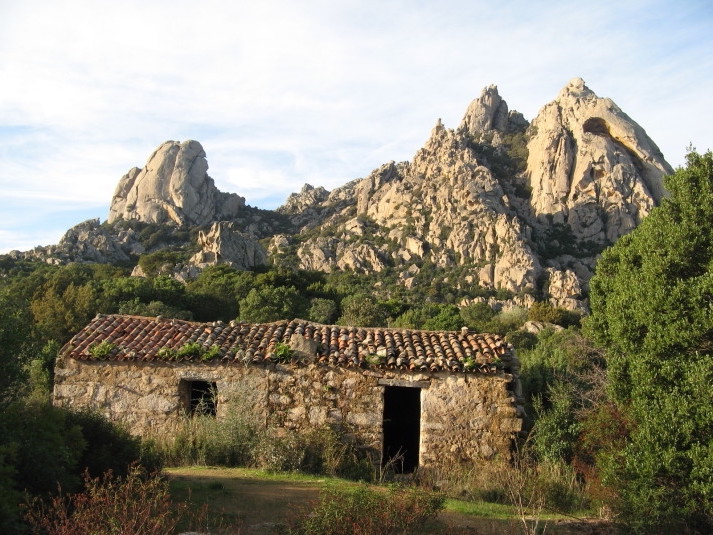Stazzi of Gallura 0 Comments

The type of Sardinia Gabbiano Azzurro Hotel & Suites offers is not just the splendid sea our guests enjoy by the hotel beach. From the blog you will certainly have been able to grasp our constant commitment to introduce you to the intimate beauty of the Sardinian Island, geographically Italian but whose differences with the rest of Italy are wonderful to know and to be pleased with.
Mostly in the hinterland, but not only, there are the Stazzi, rural typical dwellings of Gallura. The name originates after the Latin "statio", station or dwelling and is locally called lu stazzu. A group of stazzi formed a "cussogghja", where they lived in autonomy because they raised livestock, cultivated the fields and produced cheeses and cold cuts. It was the rural life center for shepherd-farmers for hundreds of years.
The term lu stazzu indicates both the home of the owner and the whole farm. On average, the stazzi are surrounded by 50 to 100 hectares of land. It is made up of a rectangular granite construction, generally a one-room flat with the fireplace in the center, (lu foghiu or the ziddha a meza casa). As an alternative to the indoors, an external oven (lu furru) and a small deposit (lu pinnenti) were built. The stable (appusentu) next to lu stazzu was used as a warehouse but if there was an alternative shelter for the cattle, this would become the sleeping quarters (la cambara). If the building was elevated above the ground floor, it was called a palace (lu palazzu).
Over time, lu stazzu were often enlarged, adding other rooms on the narrow side. Old houses were restructured and whitewashed, especially by the non-Gallurese, who bought and transformed lu stazzu into a romantic holiday home in the midst of the wonderful Gallura countryside. Today these renovated stazzi have large windows, brighter rooms and divisions of the various rooms into the kitchen and bathrooms with thermal insulation and heating. Are called lu stazzu di l'incantu being precisely the reinterpretation in a modern key, but with a reference to the ancient construction rules of this culture.
These restorations, albeit beautiful, are however accused of offending the cultural heritage of Gallura which is causing the disappearance of the original lu stazzu. But otherwise, they often fall into neglect and disrepair, instead the renovation transforms them into habitable jewels in great comfort. The Corsican stazzi are all under the protection of cultural heritage… who knows when it will be with us too?
The first stazzi were built around the beginning of the 18th century by Corsican shepherds who fled their island for family feuds or political reasons, settled in Gallura and built their homes with the local granite. The structure was simple, with a rectangular plan and a gabled roof. The interior of the house was a single room "the manna house" which served simultaneously as a kitchen, bedroom and work environment. The immigration of Corsicans seems to have also conditioned the Gallura language. However, lu stazzu in 400 years should and is considered Gallura’s and Sardinian cultural heritage.
"Amore rosso" by Vergano, 1952, taken from "Marianna Sirca" by the Sardinian Nobel prize author: Grazia Deledda, ends in what is now Costa Paradiso and is filmed in a lu stazzu in Gallura.
--
Written by Daniela Toti
Teilen Sie uns Ihre Meinung mit!